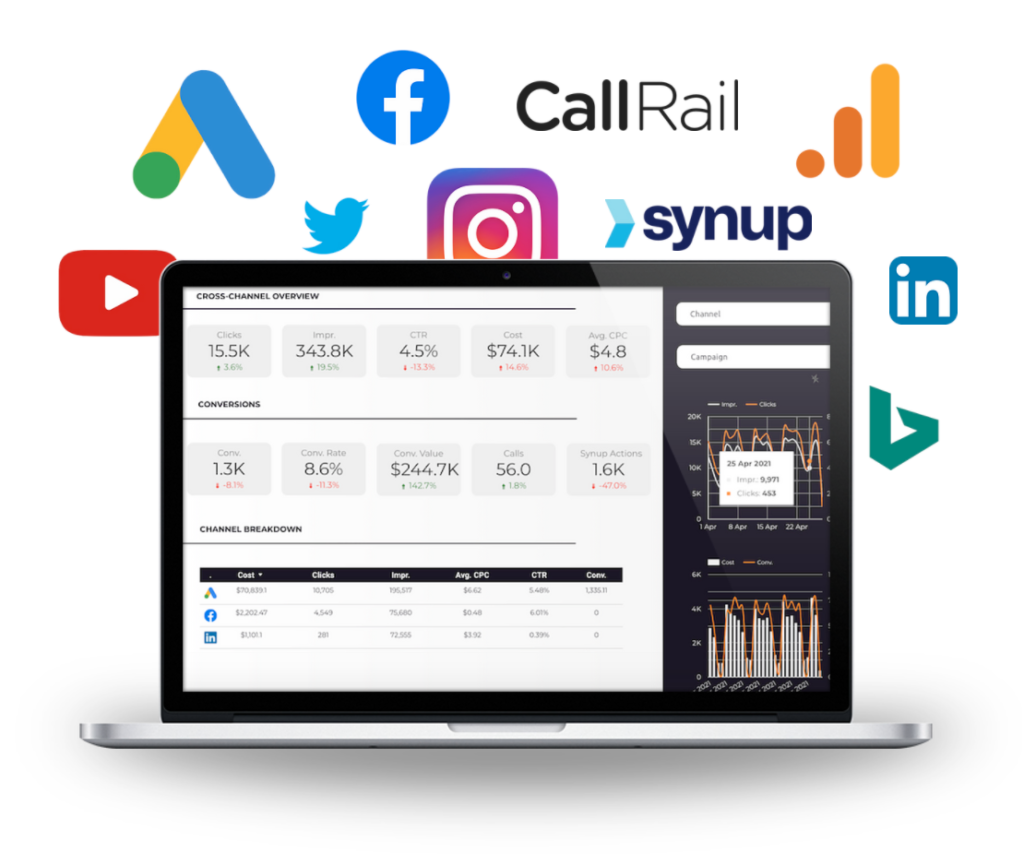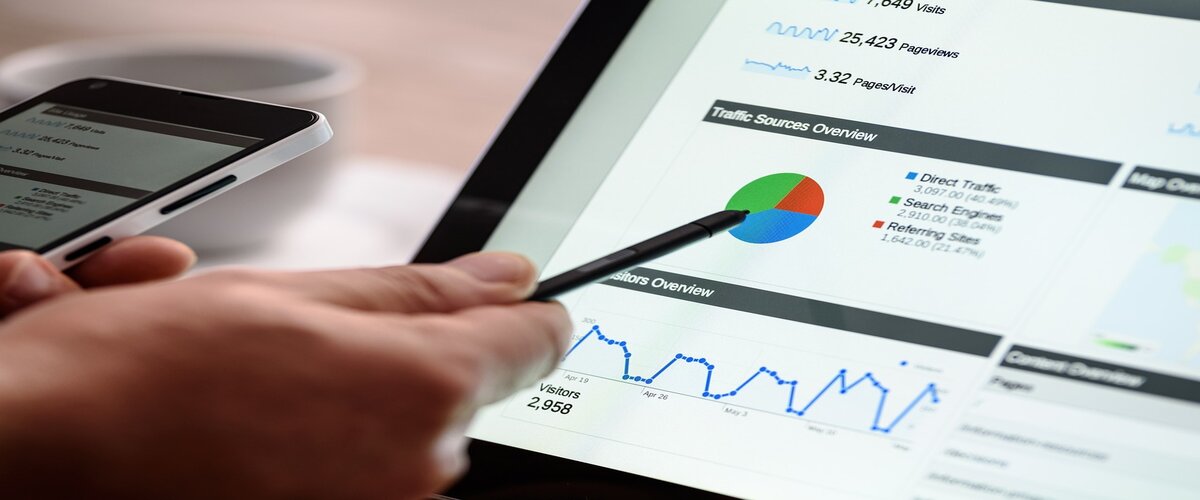Data warehousing for agencies has become extremely important in the past few years. Data warehousing trends have been evolving thanks to advances in data analytics and cloud-based tools like BigQuery.
Data warehousing is consistently evolving. Emerging technologies such as virtual data warehousing and AI-powered data analysis tools are changing the way agencies use their data.
To outwit your competitors as a marketing agency, you need to pay careful attention to the latest data warehousing trends.
In this article, we will cover the top 11 data warehousing trends to watch out for in 2023. Let’s get started!
What is Data Warehousing?
Data warehousing is the process of consolidating all your agency’s data into a single repository. The purpose of using a data warehouse is to organise the dispersed and siloed data that agencies work with and create a single source of truth where all data is consistent.
A data warehouse enables easier and faster cross-channel reporting. Instead of spending hours comparing data from various sources to create reports, using a data warehouse will enable you to create them with just a few clicks.
Moreover, having a data warehouse lets you view all the data your agency owns sorted in a visual dashboard using graphs, charts, and tables, and enables you to query it in seconds.
For these reasons, data warehousing has taken a lead role in digital marketing. A data warehouse lies at the core of business intelligence, enabling marketers to draw informed conclusions from their data warehouse and launch data-driven campaigns.
In 2022, every large agency needs a data warehouse to manage their data efficiently. Let’s see what exactly made data warehousing a necessity for agencies this year.
Top 11 Data Warehousing Trends in 2023
Nowadays, data warehousing is trending in the world of marketing agencies. Here’s a list of the 11 latest trends in data warehousing that have made it a hot commodity.
#1. Single Data Warehouse
In the last decade, companies have shown the tendency to use a multitude of SaaS apps—an average of 110 for enterprises—which leads to having data scattered across different platforms. This practice compounds costs in maintenance and subscription fees and can increase IT staffing needs for data specialists.
Consolidating your data storage sources into a single service as much as possible can reduce such costs. Following this data warehousing trend is guaranteed to optimise operations in your marketing agency, or any other large agency.
#2. Green Data Warehousing
Cloud data warehousing has increasingly become a part of energy reduction plans for businesses. It’s great to see a green data warehousing trend making its way onto the scene while we are tackling climate change.
Cloud data centres operate with energy efficiencies well above industry averages. In 2021, companies in the EU reported an 80% energy consumption reduction following the migration of their enterprise data to SaaS storage providers.
As a marketing agency, switching to a green data warehousing solution such as a cloud data warehouse can bring multiple benefits beyond energy savings. It’s beneficial for our planet, and it will reduce the carbon footprint of your agency.
#3. Outsourcing Data Management
Outsourcing data management operations is becoming a trend amongst marketing agencies looking to elevate their operations.
Outsourcing data operations enables businesses to reduce their in-house IT staffing costs. In exchange, businesses also gain access to the services of experienced specialists, whose exclusive compensation can otherwise exceed their operating budgets.
Data management operations suitable for outsourcing include:
- Data warehousing and automation,
- Encoding,
- Compilation,
- Auditing,
- System architecture design, and more.
#4. Data Warehousing AI Solutions
As the growth of the volume of data being processed is forecasted to spike, businesses increasingly need to offload data operations to faster machine learning-enabled AI systems.
With trend and pattern analysis capabilities improving by leaps and bounds, businesses that integrate AI into their data warehousing solutions can reduce their operational costs and perform data operations more efficiently.
#5. Virtual Data Warehousing
Virtual data warehouses are sets of separate databases that can be queried simultaneously by means of middleware. Virtual data warehousing is trending because it’s cost-effective and can be deployed faster than physical solutions.
By forgoing physical data replication, virtualization can improve operating speeds and reduce operating costs by as much as four times.
#6. In-Memory Computing
In-memory computing uses clusters of servers to pool total available RAM and CPU power. This design distributes data handling and processing tasks across the cluster for radically enhanced speed and scalability.
Although first popularised by the financial services industry, in-memory computing experienced rapid growth during the recent shift to remote work and has also become a trend in data warehousing.
Presently, this data warehousing trend appears to have become a permanent practice across all industries owing to the continued work-from-home practices many companies have adopted.
#7. In-Database Analytics

In-database analytics refers to a method of analysis that processes data within its storage site—a database or data warehouse. In-database analytics are built into the storage architecture and replace the use of separate applications after transfers.
Performing analytical processes on the interior minimises data movement, reduces bandwidth overhead requirements, and eliminates security risks of distributing sensitive data across multiple sites and devices.
For these reasons, in-database analytics have become one of the latest data warehousing trends, especially amongst marketing agencies.
#8. Data Compression
As marketing agencies accumulate more data over time, they have seen a need to compress their data and save on storage space. As their stored data continues to balloon, companies increasingly rely on compression tools to mitigate rising storage costs.
Data compression reduces the number of bits (binary digits) necessary to store data. It works by creating reference libraries for the 1s and 0s of binary data and then replacing longer strings with shorter reference tags.
Compressing your data frees up storage capacity, accelerates data transfers, and reduces overall storage costs. That’s why it’s been one of the most popular data warehousing trends for a while, and it’s likely to stick around.
#9. Analytics on Demand
In a SaaS-heavy work environment, users may be extracting data from warehouses through dozens of different applications. Analytics on demand has thus become a trend in marketing agencies.
On-demand analytics refers to IT architectures that allow users to access data in sandboxes—a virtual machine host—using a wide variety of software platforms. This approach is helping many companies meet the growing need for better and faster analytics processes.
#10. Hadoop Integration
The open-source application Hadoop uses a distributed file system and a parallel processing tool called MapReduce to process large data sets at high speeds.
The application has waxed and waned in use over the last decade but has found a resurgent popularity in recent data warehousing trends.
#11. Simplified Data Warehousing for Marketing Agencies
Last but not least, custom data warehouses have become a trend amongst marketing agencies.
Most data warehousing applications cater to developers. Nevertheless, marketing and sales people increasingly need access to the same data management tools to take better advantage of their data.
For users with a non-technical background who may be unfamiliar with programming and writing queries, no-code data warehousing solutions built with a user-friendly interface open up this powerful technology for broader use.
Custom Data Warehouses for Digital Marketing Agencies
Today’s digital marketing agencies tend to have their data scattered across multiple unintegrated channels such as Google Ads, Data Studio, Analytics, and an array of social media platforms. And a lot of these tools don’t even let you access all your historical data.
If you’ve been growing out of the current toolset that you use, building a data warehouse solution is the next logical step for your marketing agency.
Acuto is a marketing tech agency that can build a customised data warehouse to store your historical data from numerous sources. Contact Acuto today to learn more about how we can help your agency!
Need a Custom Data Warehousing Solution?

Conclusion
That’s a wrap on the top 11 latest data warehousing trends in 2023. If you’d like to get more out of your data, following these data warehousing trends will set you up for success.
To get started, you’ll need to set up your own data warehouse, and you’ll start enjoying its benefits from day one.






